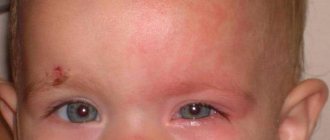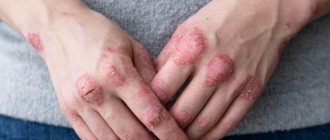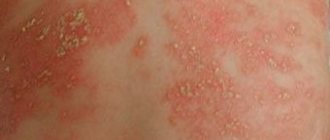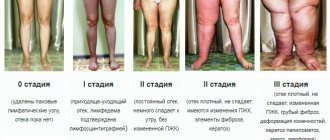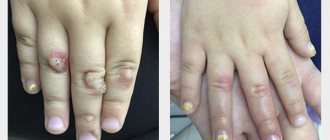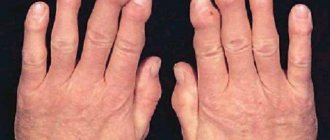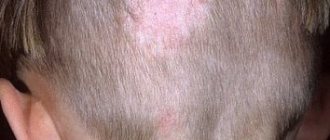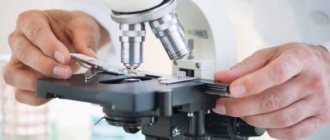Harlequin ichthyosis is a skin disease. It is diagnosed when the fetus is still in the womb. The disease spreads throughout the body and is incurable.
This is a hereditary disease, very rare, and belongs to the group of genodermatoses. Ichthyosis harlequin anencephaly is formed in the womb and is the most severe form of the disease. The entire body of the sufferer is covered with formations in the form of geometric patterns, like a harlequin. That is why the disease got its name.
Causes of harlequin ichthyosis
The disease is transmitted in an autosomal recessive manner. As a result of biochemical processes triggered by the mutating gene, protein function is lost. The ABCA11 DNA polypeptide chain becomes shorter, and fat and protein metabolism is disrupted. A large amount of amino acids accumulate in the skin.
The granular membranes do not line up as they should. Lipids (fats) are unable to form a healthy stratum corneum. The gene that transports lipid granules into keratinocyte membranes loses memory. As a result of the mutation, a disease develops. In addition, lipids (fats) undergo increased secretion.
Find out more
Diagnostics
The diagnosis of harlequin type ichthyosis is based on both a physical examination and certain laboratory tests. A physical examination at birth is vital for the initial diagnosis of harlequin ichthyosis. Physical examination reveals characteristic symptoms of the disease, especially abnormalities of the skin surface of newborns. Abnormalities on physical assessment usually lead to the use of other diagnostic tests to make the diagnosis.
Genetic testing is the most accurate diagnostic test for harlequin ichthyosis. This test detects a loss-of-function mutation on ABCA12
gene. A skin biopsy may be done to evaluate the histological characteristics of the cells. Histological examinations usually reveal hyperkeratotic skin cells, resulting in the formation of a thick, white and hard layer of skin.
Symptoms of harlequin ichthyosis
- There are gray and beige scales on the skin.
- There are cracks between the scales.
- The lips are twisted.
- The ears are damaged and may be covered with a layer of altered skin.
- The mouth is either stretched or narrowed due to the density of the diseased dermis (babies are fed only through a tube).
- There are membranes between the fingers.
- Lack of nails.
- Skeletal defects.
- There is no hair on the body.
- The eyes do not close, the eyelids are turned out.
- Dehydration of the dermis (water balance in tissues is not regulated).
A very small percentage of babies survive. About 3% of children reach the age of 11-12 years. A few live up to 18 years. They are constantly fighting for life.
Therapy
Treatment of this pathology is carried out by a neurologist.
Increased survival is achieved through the administration of systemic retinoids, such as Acitretin and Isotretinoin, but pathological skin changes persist, which adversely affects the quality of life of such patients.
In addition, systemic intensive supportive treatment is carried out to prevent infectious complications, maintain electrolyte-water balance and normal temperature, and ensure normal nutrition of the infant.
In the case of a mild course of the syndrome, parents are advised to maintain the air temperature at 20 degrees and train the child’s autonomic system and blood vessels, that is, the child’s gradual adaptation to cold and heat.
Harlequin ichthyosis in children
One sick child is born in a ratio of 1x1000000. Children have cracks, formations in the form of scales on the skin that fit tightly to each other. The formations tighten the mouth and fingers, and movements are limited. Feedings are only possible through a tube. Because of their clumsy, inverted eyelids, they sleep with their eyes open. Because the plates tighten the abdomen and chest tightly, it may be difficult for the child to breathe.
The skin is pink and reddish in color. It is very dry and requires a constant flow of water. Due to lesions throughout the body, on which there are formations in the form of thick plates, an imbalance in water balance occurs. Most children do not live to see 10-12 years of age. They require careful care, constant care and attention.
Children with this disease are transferred to intensive care wards immediately after birth. The thick, lamellar skin soon begins to peel off. It peels off centimeter by centimeter. The process takes several weeks.
Children are given antibiotics to prevent infections. When the thick skin completely peels off, the baby is left with red, dry skin. Thin plates may remain on it. After bathing, the dermis is lubricated with ointments and emollient creams. During the first weeks of life, suffering babies require constant care. You can't leave them for a minute.
Types of pathology
More than 90% of patients develop ichthyosis vulgaris, a disease that first appears in the second or third month of life. Depending on the nature of the skin lesion, the following clinical forms are distinguished:
- xeroderma, or abortive form, is the mildest variant of the disease, in which the skin becomes dry and rough, but there are no scaly layers;
- a simple shape with small scales, thin at the edges and with a dense center, which cover the entire body up to the scalp;
- shiny shape with transparent scales located in the form of a mosaic mainly on the legs;
- white form with white or slightly yellowish scales, similar in appearance to asbestos fibers;
- serpentine in shape with rough keratinizations of brown, brown or gray color, reminiscent of snake scales.
Much less common is the lamellar form of the disease (collodion fetus), fetal (Harlequin fetus), linear, etc. Some of them are incompatible with life - for example, fetal ichthyosis develops in the second trimester of intrauterine development, and the child dies in the first days of life or is born already dead.
Treatment of harlequin ichthyosis
This is done by a group of doctors, which includes:
- Dermatologist (main treatment).
- Therapist, pediatrician, family doctor (increasing the body’s protective properties, general strengthening).
- Psychologist (relieving stress, depression, breakdowns, increasing self-esteem).
- Oculist (observes vision, advises).
- Otorhinolaryngologist (ENT) (observes the ears, checks hearing).
- Gastroenterologist (observes how the body works during nutrition).
- Nutritionist (proper nutrition).
- Cardiologist (monitoring the work of the heart).
Recommendations
- ^ a b
Rapini, Ronald P.;
Bologna, Jean L.; Iorizzo, Joseph L. (2007). Dermatology: 2-volume set
.
St. Louis: Mosby. ISBN 978-1-4160-2999-1.[ page needed
] - James, William; Berger, Timothy; Alston, Dirk (2005). Andrews Skin Diseases: Clinical Dermatology
. (10th ed.). Saunders. ISBN 0-7216-2921-0. - ^ a b c d f g gram h i
“Ichthyosis, harlequin type - NORD (National Organization for Rare Diseases).”
NORD (National Organization for Rare Diseases)
. 2006. Archived from the original April 26, 2021. Retrieved April 26, 2021. - ^ a b c d f g gram hour i j
“Harlequin ichthyosis.”
A Home Guide to Genetics
. November 2008. Archived from the original July 28, 2021. Retrieved July 18, 2021. - ^ a b c d f f
Glick, JB;
Craiglow, B.G.; Choate, K. A.; Kato, N; Fleming, R. E.; Siegfried, E; Glick, S.A. (January 2021). "Improved treatment of Harlequin ichthyosis with advances in neonatal intensive care." Pediatrics
.
139
(1):e20161003. Doi:10.1542/peds.2016-1003. PMID 27999114. - ^ a b
Schachner, Lawrence A.;
Hansen, Ronald S. (2011). E-book on pediatric dermatology
. Elsevier Health Sciences. p. 598. ISBN 978-0723436652. Archived from the original dated November 5, 2021. - ^ a b c d
Ahmed, H;
O'Toole, E (2014). "Recent advances in genetics and treatment of Harlequin ichthyosis." Pediatric dermatology
.
31
(5):539–46. Doi:10.1111/pde.12383. PMID 24920541. S2CID 34529376. - ^ a b c
Shibata, A;
Akiyama, M. (August 2015). "Epidemiology, medical genetics, diagnosis and treatment of harlequin ichthyosis in Japan." International Pediatrics
.
57
(4): 516–22. Doi:10.1111/ped.12638. PMID 25857373. S2CID 21632558. - ^ a b
Layton, Lt. Jason (May 2005).
"Review of Harlequin ichthyosis". Neonatal Network
.
24
(3): 17–23. Doi:10.1891/0730-0832.24.3.17. ISSN 0730-0832. PMID 15960008. S2CID 38934644. - Harris, A.G.; Choi, C; Pigs, M; Kelsell, D.P.; Murrell, D. F. (2016). "Cover image: Removing the crust from harlequin ichthyosis." Br J Dermatol
.
174
(5):1160–1. Doi:10.1111/bjd.14469. PMID 27206363. - Kun-darbois, J.D.; Molin, A; Jeanne-Pasquier, C; Pare, A; Benateau, H; Veissières, A (2016). "Facial features in Harlequin ichthyosis: clinical data from 4 cases." Rev Stomatol Chir Macillofac Chir Orale
.
117
(1):51–3. Doi:10.1016/j.revsto.2015.11.007. PMID 26740202. - Vergotin, RJ; De Lobos, M.R.; Montero-Fayad, M (2013). "Harlequin ichthyosis: a case report." Pediatrician Dent
.
35
(7): 497–9. PMID 24553270. - Akiyama, M. (2010). "ABCA12 mutations and autosomal recessive congenital ichthyosis: a review of genotype/phenotype correlations and pathogenetic concepts." Hum Mutat
.
31
(10): 1090–6. Doi:10.1002/humu.21326. PMID 20672373. S2CID 30083095. - Kelsell, D.P.; Norgett, E. E.; Unsworth, H; and others. (2005). "Mutations in ABCA12 underlie the severe congenital skin disease harlequin ichthyosis." Am J Hum Genet
.
76
(5):794–803. Doi:10.1086/429844. PMC 1199369. PMID 15756637. - Mitsutake, S; Suzuki, S; Akiyama, M. et al. (2010). "Dysfunction of ABCA12 causes impaired glucosylceramide accumulation during keratinocyte differentiation." J Dermatol Sci
.
60
(2): 128–9. doi:10.1016/j.jdermsci.2010.08.012. PMID 20869849. - ^ a b c
Tanahashi, K. Sugiura, K;
Sato, T; Akiyama, M. (2016). "Noteworthy clinical findings of harlequin ichthyosis: digital autoamputation caused by cutaneous constricted stripes in a case of novel ABCA12 mutations." Br J Dermatol
.
174
(3):689–91. Doi:10.1111/bjd.14228. PMID 26473995. S2CID 34511814. - Rajpopat, S; Moss, C; Mellerio, J; and others. (2011). "Harlequin ichthyosis: a review of clinical and molecular data in 45 cases." Arch Dermatol
.
147
(6):681–6. Doi:10.1001/archdermatol.2011.9. PMID 21339420. - Chang, L. M.; Reyes, M (2014). "A case of harlequin ichthyosis treated with isotretinoin." Dermatol Online
J.
20
(2): 2. PMID 24612573. - Chan, Y. C.; Tai, Yuk; Tan, L.K.; Happle, R; Jam, Y. C. (2003). "Harlequin ichthyosis in combination with hypothyroidism and rheumatoid arthritis." Pediatrician Dermatol
.
20
(5): 421–6. Doi:10.1046/j.1525-1470.2003.20511.x. PMID 14521561. S2CID 19314083. - ^ a b
Lillington, Catherine (14 April 2021).
“The inspiring Nusrit Shaheen is still smiling despite harsh conditions that cause her skin to grow ten times faster than usual.” Coventry Telegraph
. Coventry Telegraph. Archived from the original February 2, 2021. Retrieved January 28, 2021. - SNAKESKIN WOMAN: UNUSUAL PEOPLE
, Channel 5, March 22, 2021 - Rajpopat, Shefali; Moss, Celia; Mellerio, Jemima; Wahlquist, Anders; Ganemo, Agnetha; Hellstrom-Pigg, Maritta; Ilchishin Andrey; Burrows, Nigel; Lestringant, Giles; Taylor, Eileen; Kennedy, Cameron; Page, David; Harper, John; Glover, Mary; Fleckman, Philip; Everman, David; Fuani, Mohamad; Kayserili, Khulya; Purvis, Diana; Hobson, Emma; Chu, Carol; Main, Charles; Kelsell, David; O'Toole, Edel (2011). "Harlequin ichthyosis." Archives of Dermatology
.
147
(6):681–6. Doi:10.1001/archdermatol.2011.9. PMID 21339420. - Waring, J. I. (1932). "An Early Record of the Harlequin Fruit in America." Archives of Pediatrics and Adolescent Medicine
.
43
(2): 442. doi:10.1001/archpedi.1932.01950020174019. - "Harlequin ichthyosis." Archived from the original on October 14, 2008. Retrieved November 10, 2008.
- Man Survived Rare Skin Disease: Harlequin Ichthyosis, Usually Fatal at Birth, 10News.com San Diego; posted November 16, 2004; Backup to WayBack Machine
- Mid-South woman with rare genetic disease defies risk and gives birth to healthy baby Archived August 29, 2013 Wayback MachineUrsula Madden; at Fox19 Cincinnati; Published August 26, 2013 Retrieved August 27, 2013
- “Mid-South Woman Born with Rare Skin Disease Dies Unexpectedly.” WMCActionNews5. March 7, 2021. Archived from the original March 12, 2021. Retrieved April 29, 2021.
- “[UPDATED] I am the first woman with Harlequin ichthyosis to give birth.” 2017-01-05. Archived from the original on April 27, 2021. Retrieved April 27, 2021.
- Wilke, Marelize (July 6, 2021). "This strange disease gives children very hard, thick skin." News24
. Retrieved 2020-08-08. - News24 (December 31, 2014). "21-month-old boy defies challenges, thrives while living with Harlequin ichthyosis." News24. Archived from the original January 1, 2015. Retrieved January 1, 2015.
- Sean D. Hamill (June 27, 2010). "A city girl is eager to talk about her skin condition." Pittsburgh Post-Gazette. Archived from the original June 30, 2010. Retrieved June 27, 2010.
- "'The Girl Behind the Face Fights Cyber Bullies.' scmp.com
. 2016-06-13. Archived from the original June 14, 2021 - "Nagpur: Harlequin baby dies two days after birth." hindustantimes.com/
. June 13, 2021. Archived from the original June 14, 2021. Retrieved June 14, 2021. - "India's first harlequin baby born without outer skin dies two days after birth." India TV
. June 14, 2021. Archived from the original June 17, 2021. Retrieved June 14, 2021.
Traditional treatment (drugs)
The complex of drugs includes creams, ointments, gels. They should be selected so that the components contain the necessary substances. It is imperative to look at antimicrobial and antibacterial properties. The preparations must contain urea. The patient will have to constantly nourish and moisturize the dermis, so it is necessary to select moisturizing and nourishing preparations.
Narcotic painkillers are introduced into therapy. Keratolytics will help get rid of scales.
Vitamin and mineral complexes
Treatment is aimed at increasing immunity. Patients feel better. The courses last a month, then are repeated after some time. The body receives all the necessary vitamins and minerals. Doctors assign a special role to taking vitamins of groups A, B, C, E, and nicotinic acid.
Vitamin A and its analogues, when used internally, help get rid of scales. However, the oral dose is prescribed only by a doctor, since retinoids cause side effects and are toxic. They come in the form of tablets, capsules, injections, droppers.
Hydrotherapy
Patients with the disease constantly take baths, as their skin is dehydrated. In the morning you need to saturate your skin with moisture for at least two hours. Herbal baths with the addition of string, chamomile, and straw provide a good anti-inflammatory effect. Water with borax softens the dermis. Patients can simply bathe in ordinary water, but for at least 2 hours. After bathing, lubricate the skin with Vaseline.
Spa treatment
Consists of a complex of therapeutic measures. They are aimed at cleansing the skin and getting rid of scales. Separation of the scales is painful, so they are first softened. This process is helped by vitamin U and other drugs. Patients are treated by bathing in sulfide and carbon dioxide baths.
Heliotherapy
Sun treatment can be offered to patients in precise dosages. A beam of infrared radiation is directed to the affected skin and lingers on one of the areas. After a short period of time, the sheaf of light is transferred to another zone. It also lingers here, saturating the stratum corneum with particles.
Thalassotherapy
This is one of the methods of climatotherapy, which is a treatment by the sea. Those suffering from the disease are recommended to take sea bathing, wrapping themselves with seaweed and estuary mud. It is beneficial for patients to breathe sea air; a large amount of seafood is included in the menu. Sun, sand, and air baths increase immunity, improve the well-being and mood of patients.
Treatment of severe forms
Patients are given plasma transfusions, drugs with a high content of iron and calcium, and aloe extract. All procedures are aimed at stimulating the immune system. Hormone therapy may be prescribed.
ethnoscience
At home, harlequin ichthyosis is treated with herbal baths and wraps. A softening ointment is boiled in lard with herbs. The grass can be changed, take the appropriate action: rowan, motherwort, sea buckthorn, peony, tansy, plantain, celandine, horsetail. Decoctions are prepared and drunk in courses of 30 days. After a break, repeat. Treatment is aimed at relieving pain and symptoms. The disease harlequin ichthyosis is incurable. All healing methods are aimed at alleviating the condition of those suffering.
Diet therapy
The menu of patients should be rich in products with a high content of vitamins of groups A, B, E, C. You can grind and prepare dishes in the form of puree, make juices, compotes, jelly. Vegetables and fruits are required, but in moderation. The diet should include:
- lactic acid products;
- meat (game, chicken, beef, pig);
- porridge (buckwheat, oatmeal, rice, others);
- seafood;
- fruits and vegetables of any kind, but yellow and red ones are especially useful.
To choose the right diet, it is better to consult a professional nutritionist.
Physiotherapy
Physiotherapy procedures help patients well. Applications with emollient and analgesic drugs may be prescribed. Baths with the addition of soda, starch, and sea salt soothe the dermis. UV irradiation activates metabolic processes and improves skin metabolism.
Climatotherapy
Patients are recommended to live in an area with a mild climate. The gifts of the Dead Sea can also be used in the fight against disease. Air, sun, and sand baths have a beneficial effect on the skin. Therapeutic mud saturates the dermis with many useful elements.
Negative impact of the disease on the patient
Ichthyosis causes not only external harm, but also affects the processes and functions of the body:
- the functionality of the pancreas and adrenal glands is inhibited;
- the functioning of the gonads is disrupted;
- there is a lack of cellular immunity;
- vitamin A is not absorbed;
- spastic paralysis;
- oligophrenia;
- the functionality of the glands responsible for sweat production decreases;
- pain when trying to “clean” the skin;
- cardiac dysfunction in the body;
- mental retardation;
- Possible death.
Mortality among children with congenital ichthyosis is highest.
Prevention of harlequin ichthyosis
Unfortunately, the only method here is consultation with a geneticist. Expectant parents can take a special test, the results of which will show whether someone is a carrier of the mutating gene. If there is one in the family, the geneticist calculates the likelihood of having a healthy child.
If the fetus is affected by the disease, a sick child will be born. Parents themselves decide what to do in such a situation. Carriers of the mutating gene do not necessarily get sick themselves, but they can give birth to sick offspring.
Modern medicine does not know how to cope with the disease. Scientists have not yet fully uncovered the processes occurring in the gene, which has forgotten how to build the stratum corneum of the human dermis. According to some hypotheses, the gene builds the dermis for another biological species related to the underwater world, but not for humans.
Known cases
- Nusrit "Nelly" Shaheen (born 1984), possibly the oldest survivor; She lives in Coventry, England, and was one of nine children in a Pakistani Muslim family. Four of her eight siblings also had the disease but died in early childhood.[20][24]
- Ryan Gonzalez (born 1986)[25] is the oldest person in the United States living with the disease. He was featured in an episode of Medical Incredible
. - Stephanie Turner (1993[26] – 2017[27]) was the second oldest person in the United States living with the disease and the first to give birth. Turner's two children are not ill. She died on March 3, 2017, at the age of 23.[28]
- Mason van Dyk (born 2013), despite having an estimated lifespan of one to five days, was five years old as of July 2021.[29] Doctors told his mother Lisa van Dyk that this was the first case of harlequin ichthyosis in South Africa, and that she had a one in four chance of having another child with the condition.[30]
- Hunter Steinitz (born October 17, 1994) is one of twelve Americans living with this disease. National Geography Special Issue "Uncommon People: Skin".[31]
- Mui Thomas (born 1992 in Hong Kong) qualified as the first rugby referee with harlequin ichthyosis.[32]
- A female child was born in Nagpur, India in June 2021 and died two days later. This is reported to be the first case of the disease in India.[33][34]
Preventive actions
Recommendations for the prevention of ichthyosis are as follows:
- first of all, if necessary, you need to change your place of residence - the climate should be warm and humid;
- where the patient is, the air should be moist - you can use a humidifier;
- food should be rich in vitamins and microelements;
- It is better to cook food only by steaming, fried is excluded;
- smoking and alcohol are excluded.
By following all the recommendations, you can easily cope with the disease. And if you examine the child while still in the womb, then you can get rid of ichthyosis at the initial stage.
